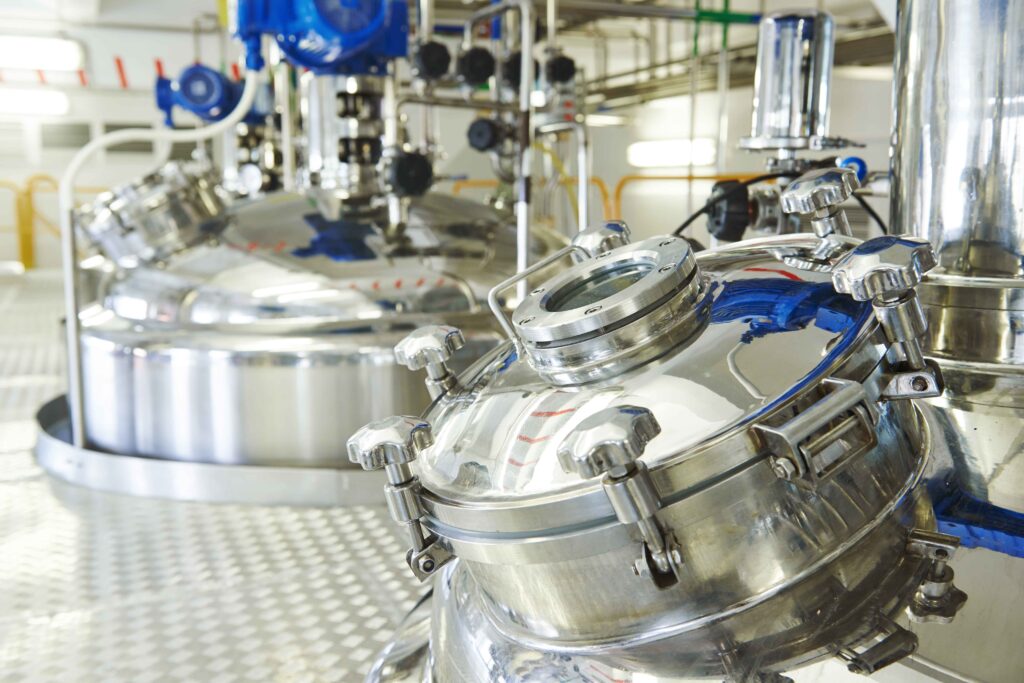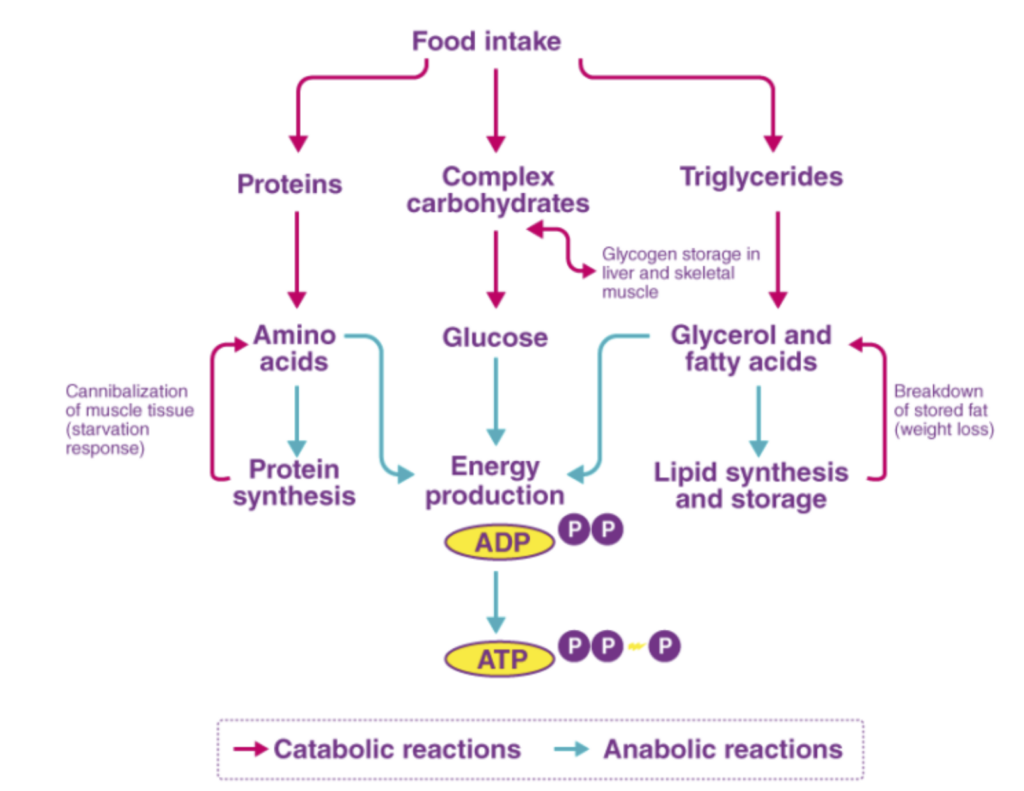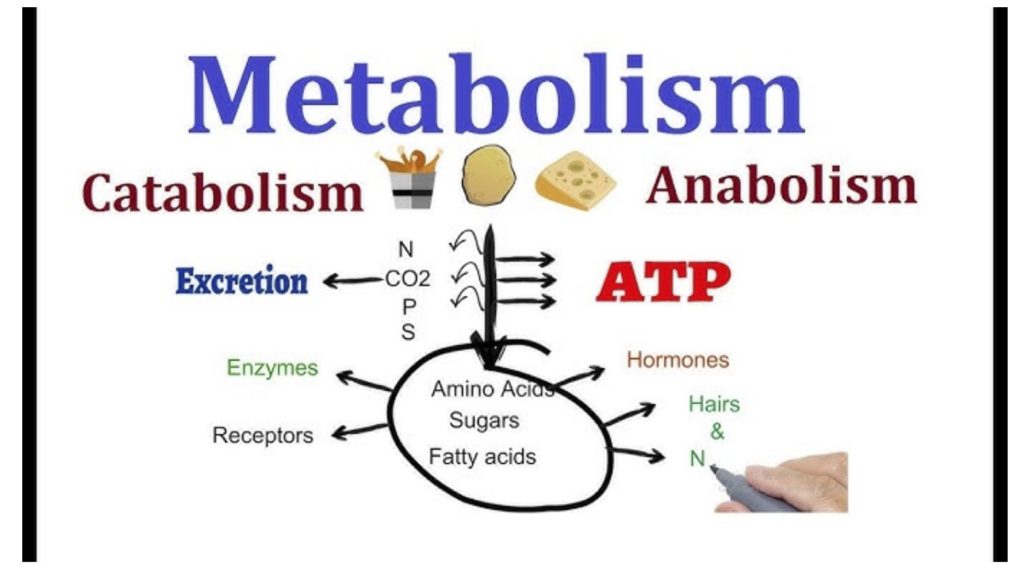It is a common question and one that is often asked and that is how the body gets the energy? It is used anytime from running a marathon to even breathing thus the need to have energy. But where is this energy derived from? The answer is in it, one of the essential functions that involve the breakdown of molecules to liberate energy.
This guide will explain what catabolism is, how the catabolic pathways function, and a comparison between catabolic vs anabolic processes. We shall also provide the answers to some of the frequently asked questions to ensure that the reader has a clear understanding of this important biological process.

What Is catabolism?
It is also known as catabolysis is the biological process involved in the breakdown of large biomolecules into smaller ones that include carbohydrates, fats and proteins. This results in breaking apart of the molecules and in the process, energy is released to support cellular processes.
Key Features:
Here are some key features of catabolism:
- Glycogen: Carbohydrates are broken into simple sugars while fats and proteins are also broken down into simpler substances.
- Releases energy: This they do while synthesizing ATP (adenosine triphosphate), which is commonly known as the cell’s energy source.
- Required for survival: If cells cannot break down molecules, they will not be able to have the energy for maintenance and functioning.
Can you believe that you are involved in catabolic reactions all the time including the time that you are asleep?
The Science Behind It
Catabolism is one of the important metabolic activities of living organisms that involves the disintegration of macronutrients like carbohydrates, proteins and fats into its simple substances through a series of highly selective chemical reactions; these reactions are termed as catabolic reactions.
These catabolic reactions taking place in controlled environments inside the cell and under the influence of enzymes are extremely well regulated and efficient. The released amount of energy during the catabolic process is then converted into another molecule known as adenosine triphosphate (ATP) through a series of metabolisms. The energy stored in ATP form is the cellular powerhouse, which is fundamental for the functioning of physiological processes that are critical in the survival of the cell. ATP is a multifunctional molecule as it provides energy for various cellular processes including muscle contractions, nerve impulses, biosynthesis, etc.
In summary, the coordinated process and ATP synthesis can be deemed as one of the most complex mechanisms of cellular metabolism, which is essential for the existence of life.
The Role of Enzymes
They are involved in catabolic processes since they help in the cleavage of significant large molecules. Some of the enzymatic processes involved in catabolism are as follows:
- Amylase – Reduces complex carbohydrates into small sugars
- Lipase – is the enzyme that digests fats into glycerol and fatty acids
- Protease – Degrades proteins and converts them into amino acids
These enzymes facilitate catabolic reactions since, in the absence of them, such reactions would be too slow to support life.

Energy Production Through Catabolism
The energy that is produced is used in:
- Muscle contraction (enabling movement)
- Nerve signaling (allowing brain function)
- First, there is cell repair and maintenance, which is necessary for the survival of an organism in the body.
Now, it is the best time to discuss the main catabolic pathways that lead to energy generation in our body.

Understanding Catabolic Pathways
1. Glycolysis (Breakdown of Glucose)
Glycolysis is the process, which takes place in the cells and in which glucose (sugar) is split into pyruvate, and ATP, NADH are produced. This process occurs in the cytoplasm of the cells and anaerobic respiration does not involve oxygen.
Steps in Glycolysis:
- Glucose is phosphorylated to form glucose-6-phosphate.
- Specifically, enzymes cleave the molecule into two molecules of a three carbon atom fragment.
- ATP and NADH are generated.
- Lactic acid is generated and leaves the glycolysis cycle while the final product is pyruvate.
2. Citric Acid Cycle (Krebs Cycle)
Hence, after passing through glycolysis, an important molecule called pyruvate goes through the change in order to enter the mitochondria. Within this final powerhouse of the cell, pyruvate transforms into the citric acid cycle also referred to as the Krebs cycle where it undergoes a number of complex transformations.
This phase is a vital stage of the process of cellular respiration where the conversion of pyruvate is done thoroughly so as to provide more ATP, which is a universal energy providing molecule present in the cells. Moreover, it generates electron carriers known as NADH and FADH2 which are important in the electron transport chain process.
Finally, these electron carriers facilitate the production of ATP in the next process of respiration so that the cells can carry out all their metabolic and biological processes effectively.
3. Electron Transport Chain (ETC)
The final input process of the cellular respiration, a rather complicated sequence of reactions which occur at the mitochondria of every cell, is the electron transport chain. At this stage, electrons generated through the reduction of NADH and FADH2 coenzymes are transferred through a chain of protein structures located in the inner mitochondrial membrane.
As these electrons move along the chain, energy is released step by step and is utilized to build adenosine triphosphate (ATP), which is strictly known as the cell’s energy currency. This process of electron transferring associated with the ATP synthesis is a very complex one providing the energy required for different cellular processes like growth, repair and locomotion in organisms.
In addition, the electron transport chain is involved in the regulation of cell metabolism since it ensures the slow, sustainable and constant release of energy in the cell for the necessary metabolic processes and biological functions at the molecular level.
4. Lipid Catabolism (Beta-Oxidation)
Beta-oxidation of fatty acids is an important juncture in catabolism whereby fatty acids are cleaved into two carbon units of acetyl-CoA, which is a vital reagent required in the Krebs cycle to produce ATP, the body’s energy source. It is therefore important to understand this mechanism in order to get insight on how the body mobilizes and utilizes fats for fuel.
5. Protein Catabolism
When carbohydrates and fats are not available, they are also used to provide energy through hydrolysis like carbohydrates, but in this case, proteins take the place of carbohydrates. Here, the proteins are subjected to digestion and reduction to amino acids that can undergo catabolism and be converted into energy that can be used in the body.
Catabolic vs Anabolic: What is the difference?
Catabolism vs anabolism are two chemical processes that go hand in hand as they are two sides of the same whole, known as metabolism. While catabolism involves breakdown of molecules then anabolism is the building up of these molecules.
| Feature | Catabolism | Anabolism |
| Purpose | Breakdown of molecules | Synthesis of molecules |
| Energy | Releases ATP | Requires ATP |
| Example | Digestion of food | Muscle growth |
| Result | Smaller molecules | Larger molecules |
To many people’s surprise, weightlifting also consists of catabolic vs anabolic processes. While exercising, muscle tissue is broken down (catabolic), but post-exercise recovery increases muscle synthesis (anabolic) !

Real-World Applications
1. Weight Loss
Thus, knowledge of catabolic pathways can assist to reveal the process through which the body fuels itself using fat. Reducing the quantity of food consumed through dieting means that the body receives fewer energy calories hence the start of catabolism and subsequent weight loss.
2. Medical Conditions
Metabolic diseases such as cancer or diabetes might interfere with normal catabolism so that the body is losing muscle mass or lacks energy.
3. Exercise Performance
It is similar to the pro-athletes’ understanding of catabolic vs anabolic states in reference to their training and recovery programs to promote muscle build-up.
4. Biofuel Production
The bioconversion process makes use of microbial catabolism, which is the process of the decomposition of organic material into sources of fuel, more specifically, into biofuels.
Conclusion
Catabolism is a paramount process that involves breakdown of nutrients and production of energy in our body. By having proper knowledge of catabolic pathways and the difference between catabolic vs anabolic processes, one is in a position to make the right decision about dieting, exercising, and health in general.
The next time you decide to eat a meal or take your body to the gym, thank the process for providing your body the necessary energy! Read our more articles for more info!
FAQs
- What leads to initiation of catabolism in the body?
Starvation, exercise or any situation where energy levels are low are some of the factors that lead to catabolism.
- Can catabolism be harmful?
However, the breakdown of tissues is also necessary, but when this is done to extremes as is seen in malnutrition, then it will lead to muscle wastage.
- How does this catabolic vs anabolic balance work in relation to health?
Moderation is thus crucial in the metabolic process since excessive catabolism means breaking down of tissues while excessive anabolism means the depositing of fats.
- What foods support healthy catabolism?
The high-protein diets, carbohydrates that are not easily broken down, and fats facilitate the different metabolic activities in the body.
